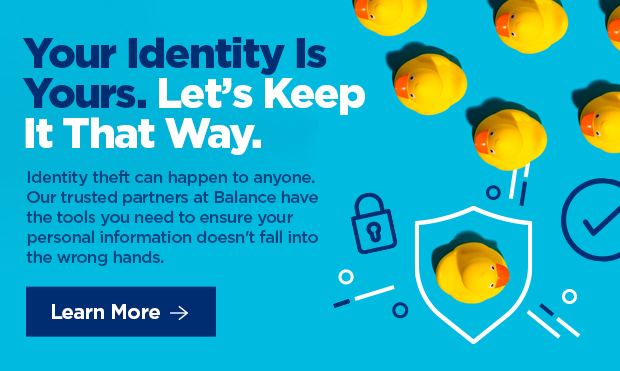Online transactions are as much a reality in today’s world as overpriced latte. Unfortunately, with all of the passwords and account numbers floating around online, it’s possible that a fraudster can steal your personal information and go on a crime spree. You don’t even have to make any mistakes to become a victim of online identity theft.
Identity theft involves any deception or crime that results in the loss of personal data including such things as credit card numbers, banking information, Social Security numbers, usernames and passwords.
There are many ways criminals can use your personal information. For example, they can commit crimes posing as you. They can also hold all of your computer files for ransom or open credit card accounts in your name. If the latter happens, fraudsters can incur debt at your expense, and you may not discover it until your credit score takes a nosedive.
An identity fraud study revealed that $10.2 billion was stolen from 5.7 million American consumers in 2023, and the year isn’t over yet! How do so many people become victims of online identity theft and—while no one can prevent it 100 percent of the time—what actions can you take to help keep yourself secure?
Use strong passwords.
One of the most common methods criminals use to glean information is logging into your various online accounts. Using a strong password is the first line of defense in protecting yourself from online identity theft. Create a password of at least eight characters using a mix of letters, numbers and symbols. Never use sequenced numbers or letters, your birthday, Social Security number (not even portions) or family names (first, middle or last).
Don’t share your passwords.
A surprising 95 percent of people share their passwords. The surest way to remain safe is by keeping your passwords private, and logging out and clearing your passwords whenever you use a public computer. You should also change your passwords monthly.
Use Multifactor Authentication (MFA).
Most online services involving sensitive personal information (like bank accounts and personal emails) offer two-step, or multifactor authentication (MFA) as an option. Typically, before accessing your account from a new device, you are required to enter a code sent to the phone number your service provider has on record. While this process can sometimes seem time-consuming, it can be an effective deterrent to a criminal attempting to hack your account.
Use different passwords for different accounts.
Using the same password on multiple sites increases your vulnerability to online identity theft. Why? Once criminals crack one account, they can use that password to attempt to access your other accounts. If you frequently visit many sites requiring passwords and you’re worried about forgetting them, then consider using password managers to help you keep track of your various usernames and passwords.
Secure your wireless network.
The problem with leaving your wireless network open is that any potential attacker can monitor your website usage. From there, they can build a profile of the websites your family visits, and eventually collect personal information. Luckily your network is more secure if you have WPA2 encryption, a network security measure on all certified Wi-Fi systems sold after 2006 that protects you from such attacks.
If you are in a public environment and are using public Wi-Fi, use extreme caution: avoid using it for banking and any other transaction that contains sensitive information.
Only shop at trusted sites.
There are countless websites ready to sell you whatever you need, but they’re not all reputable. To avoid potential problems, it’s best to only shop from reputable, certified sites. Stick to purchases made on URLs beginning with “https” or that display a lock icon in the address bar. You can also use a link checker to ensure that a website is safe.
Avoid phishing scams.
Sometimes criminals use popups or spam that closely resembles legitimate businesses to collect your personal information. The easiest way to avoid phishing schemes like these is to approach every email you receive (especially from strangers) with skepticism. Never click on any link or attachment that appears suspicious, even if it seems to be from a person or business you know. Remember: The sender’s address and any links contained in the email should precisely match the company’s URL before you proceed.
Use anti-virus and anti-malware software.
Keyloggers, backdoors or any other malicious programs can be installed on your computer in different ways to enable criminals to gain entry into your system. With any online transaction, there can be hidden malware involved that steals your most personal information without any signs or warnings. That’s why you should use anti-virus and anti-malware software and update it regularly. Check out this link for the best anti-virus protection of 2018, tested by PC Mag.
Monitor your credit profile.
Since there’s no way to guarantee online safety, monitoring your credit profile is essential to protecting against identity theft. U.S. residents can request a free annual credit report from annualcreditreport.com. Check it for any unauthorized transactions (particularly new credit cards or loans) and take immediate action by setting up a free fraud alert (contact one of the credit agencies: Equifax, Experian, and TransUnion) if there’s any suspicious activity. You can also freeze your credit report for around $30 to ensure no new credit card is issued.
Getting your online identity stolen is easy. Ignoring security update notifications could expose you to risks. Simply sharing passwords with untrustworthy people can lead to identity theft, as can phishing scams, using unsecure wireless networks and clicking on links that download malware onto your smartphones or computers. Fortunately, there are many reliable identity theft protection software programs available and practicing these different security measures can go a long way in protecting yourself from online identity theft.
Resources:
- Equifax
- Experian
- TransUnion
- Annual Credit Report
- Federal Trade Commission: (877) 382-4357
- Identity theft hotline: (877) 438-4338






I really love this post. keep it up.